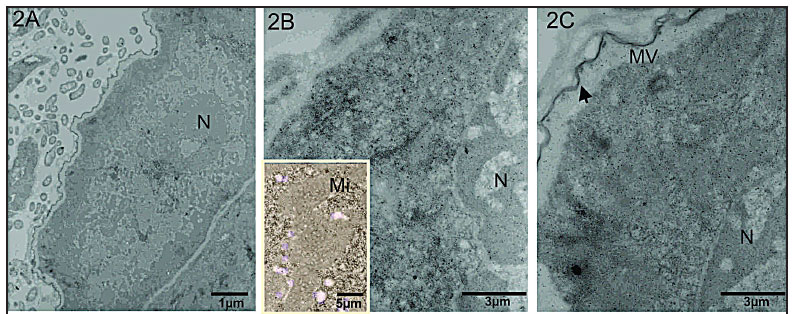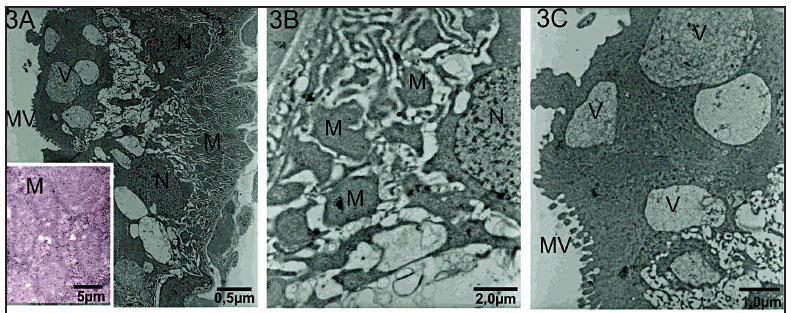INTRODUCTION: Dengue is an important public health problem in many countries and its main vector Aedes aegypti, is the mosquito most adapted to urban areas. For the first time, the mechanism of action of labdane diterpenoid extracted from Copaifera reticulata and the fraction enriched of catechin tannins extracted from Magonia pubescens is demonstrated through ultrastructural alterations of Aedes aegypti larvae. METHODS: Experiments were performed using a 0.9ppm solution of diterpenoid and 3.7ppm of the fraction as the main catechin tannin of molecular mass 846Da. The compounds were obtained by thin layer chromatography and identified by nuclear magnetic resonance of hydrogen and mass spectrometry. Larvae that achieved lethargic state were collected and dissected. Next, they were contrasted with 1% uranyl acetate, dehydrated, embedded and polymerized. Ultrathin sections were made, mixed with 3% uranyl acetate and lead citrate and placed in an electron microscope. RESULTS: The main ultrastructural alterations caused by the diterpenoid and by tanins in larvae of Aedes aegypti were: cytoplasmic vacuolation, alteration of microvilli, cellular aging, cell disruption and degeneration, formation of secretion vesicles and structural changes in microvilli, irregular nuclei and displacement of cells in the basal lamina. CONCLUSIONS: The fraction containing tannins and the diterpenoid caused the death of Aedes aegypti larvae by cell destruction in the midgut.
Aedes aegypti; Copaifera reticulata; Magonia pubescens; Control; Ultrastructure









